Pink Gemstones in Contemporary Jewelry Design
How Rose Quartz, Pink Sapphire, Rhodolite Garnet, and Other Pink Gems Empower Your Wearable Art Statement
Pink gemstones have graced the jewelry pieces since ancient times. Historically, gems like Rose Quartz were cherished by civilizations such as the Romans and Egyptians, who believed in their powers of love and healing. Pink Sapphires, often symbols of wisdom and virtue, adorned the treasures of nobility and clergy alike. These stones, along with others like the Rhodolite Garnet, known for its protective and enlightening qualities, have woven their way through the tapestry of time, each carrying its own story and significance.
Fast forward to today, and the allure of pink gemstones has not waned. They remain stalwarts in traditional jewelry, embodying elegance and grace. Yet, their appeal has broadened, capturing the imagination of modern, unconventional jewelry designers who see beyond the conventional. Designers like German Kabirski are at the forefront of this movement, leveraging the unique beauty of pink gemstones to craft pieces that not only adorn but also express individuality and break the mold. In their hands, Rose Quartz, Pink Sapphire, Rhodolite Garnet, and their contemporaries are not just gemstones; they are mediums of self-expression and statements of a distinctive style.
This renaissance of pink gemstones in contemporary jewelry design underscores a fascinating journey from ancient symbolism to modern artistry. It highlights a shift towards jewelry that speaks to personal narratives and unconventional beauty, with pink gemstones leading the charge in this colorful revolution.
Let's dive deeper into each pink gemstone and explore what makes them perfect for wearable art and artistic self-expression.
Pink Sapphire: A Favorite of German Kabirski
Pink Sapphire stands out in the jewelry world for its unique charm and durability, making it a preferred choice for designers like German Kabirski. This gemstone, known for its striking pink color, combines beauty with practicality, making it ideal for contemporary jewelry designs.
Originating from several corners of the globe, including Sri Lanka, Madagascar, Myanmar, and parts of Africa, Pink Sapphire is part of the corundum family, which is the same mineral species as ruby. The pink hue comes from trace amounts of elements like chromium, iron, and titanium. This variety of colors allows for versatility in jewelry design, enabling creators to select shades that range from soft pastels to vibrant, deep pinks.
Gemologically, Pink Sapphire is highly valued for its hardness, which is second only to diamonds. This makes it an excellent choice for everyday wear, as it can resist scratches and damage better than many other gemstones. Its durability, combined with its attractive color, makes Pink Sapphire a practical and stylish option for modern jewelry.
While the scientific community doesn't endorse the idea of magical properties in gemstones, Pink Sapphire is traditionally associated with emotional healing, love, and compassion. These associations are more about personal belief and the meanings people choose to attribute to their jewelry, rather than verifiable facts. However, this aspect of Pink Sapphire adds an extra layer of appeal for those who enjoy stories and symbolism.
German Kabirski's use of Pink Sapphire in his jewelry designs showcases the stone’s potential for self-expression and innovation. By incorporating this gemstone, Kabirski connects wearers to the beauty and resilience of Pink Sapphire, making it not just an accessory but a piece of art that carries meaning and history.
Pink Sapphire: Bridging History and Modernity
Royal Affections for Pink Sapphire
While specific historical records about pink sapphires are less common than those for blue sapphires, pink sapphires have been treasured by royalty and nobility for centuries. Their rarity and beauty made them sought-after gems for royal jewelry collections. For example, sapphires, in general, have been a staple in royal jewelry across various cultures, symbolizing wisdom, virtue, and good fortune.
Pink Sapphire As A Symbol of Love
In more recent history, pink sapphires have become popular as symbols of love and affection, mirroring the trend of using diamonds and other precious stones in engagement rings and romantic gifts. Their vibrant pink hue is associated with emotions and is considered perfect for expressing love.
The Discovery of Pink Sapphires in Madagascar
In the late 1990s, Madagascar emerged as a significant source of high-quality pink sapphires, which brought renewed attention and popularity to these gemstones. The discovery of these deposits made pink sapphires more accessible to the global market, influencing jewelry trends and designs.
Technological Advances in Gemstone Treatment
The enhancement of pink sapphires through heat treatment has been a significant development, allowing lighter-colored sapphires to achieve a more vibrant pink hue. This practice has historical roots but has been perfected over time, showcasing human ingenuity in maximizing the beauty of natural gemstones.
Celebrity Influence
Authentic anecdotes about celebrities and public figures wearing pink sapphires are numerous. For instance, Penélope Cruz has been spotted wearing pink sapphire jewelry on the red carpet, highlighting the gemstone's modern appeal and its role in contemporary fashion.

A Natural Puzzle: German Kabirski's Raw Pink Sapphire Pieces
German Kabirski’s unique vision for jewelry design shines brightly in his work with raw Pink Sapphire. Eschewing the traditional path of perfectly cut stones, Kabirski instead celebrates the imperfection and character of raw, unspoiled gemstones. His innovative method of setting rough Pink Sapphire creates stunning 'Stained Glass' compositions, where each irregular crystal is meticulously wrapped in silver or gold. This technique allows the individual pieces to connect like segments of a natural puzzle, showcasing the gemstone's authentic beauty in a groundbreaking display. Kabirski's preference for raw, uncut gemstones over their polished counterparts speaks to his desire for authenticity and character in his designs. By embracing the raw beauty of Pink Sapphire, Kabirski invents a new narrative in jewelry design, one where imperfections are not merely accepted but revered as signs of authenticity and a source of inspiration.
Rose Quartz: The Heart Stone's Journey Through Time
Rose Quartz, with its gentle pink essence, is a stone that captures the heart. Known as the stone of universal love, it restores trust and harmony in relationships, encouraging unconditional love. Rose Quartz purifies and opens the heart at all levels to promote love, self-love, friendship, deep inner healing, and feelings of peace. It's not just its aesthetic appeal that makes it a favored choice in jewelry design but also its symbolic significance of compassion and tenderness.
This quartz variety is found in abundance across the world, with significant deposits in Brazil, Madagascar, and
South Dakota in the USA. Its widespread availability makes it accessible for various uses, including fine jewelry,
decorative pieces, and healing crystals. The soft pink color, often translucent and sometimes opaque, comes from
trace amounts of titanium, iron, or manganese within the stone. In the world of gemology, Rose Quartz stands out for
its cloudy to translucent quality, which diffuses light and gives the stone its characteristic milky
sheen.
Historically, Rose Quartz has been used in love rituals and ceremonies for centuries and remains popular in
contemporary healing practices. Ancient Romans, Egyptians, and Greeks believed in the power of Rose Quartz to signify
ownership and ward off evil. It was often used in talismans and amulets as a symbol of protection and to foster love.
In the realm of modern jewelry design, Rose Quartz is celebrated for its versatility and the soft, soothing vibe it brings to any piece. Its pale pink hue complements a wide range of metals and other gemstones, making it a staple in both minimalist and more elaborate designs. Jewelry designers like German Kabirski appreciate Rose Quartz for its ability to convey emotion and expressiveness through the natural beauty of the stone, creating pieces that resonate with wearers on a personal level.
Rose Quartz continues to be a gemstone of choice for those looking to add a touch of softness and love to their collections. Whether set in a ring, necklace, bracelet, or any other form of jewelry, Rose Quartz brings a piece of the earth’s intrinsic beauty and a reminder of love’s infinite presence in our lives. Its enduring popularity attests to the timeless appeal of natural gemstones that not only adorn the body but also enrich the soul.
Embracing Imperfections: German Kabirski's Raw Rose Quartz Jewelled Freaks
German Kabirski has a profound appreciation for the natural, unrefined beauty of Rose Quartz, choosing to incorporate it in its raw, uncut form into his unique jewelry designs. This deliberate choice celebrates the gemstone's natural state, believed to retain ancient energy untouched by human hands. Kabirski views raw Rose Quartz as a strong talisman and protector against mainstream fashion trends, embodying the philosophy that true beauty lies in natural imperfection. The inclusion of inclusions, cracks, color zoning, and other signs of authenticity in his pieces highlights the "imperfectly perfect" nature of Rose Quartz. This approach not only showcases the stone's inherent beauty and character but also connects wearers to the earth's raw magnificence, offering a distinct alternative to polished, conventional gemstones. Through Kabirski's vision, raw Rose Quartz becomes a symbol of authenticity and life, challenging traditional notions of beauty in jewelry design.
Pink Garnet: The Gem of Many Hues
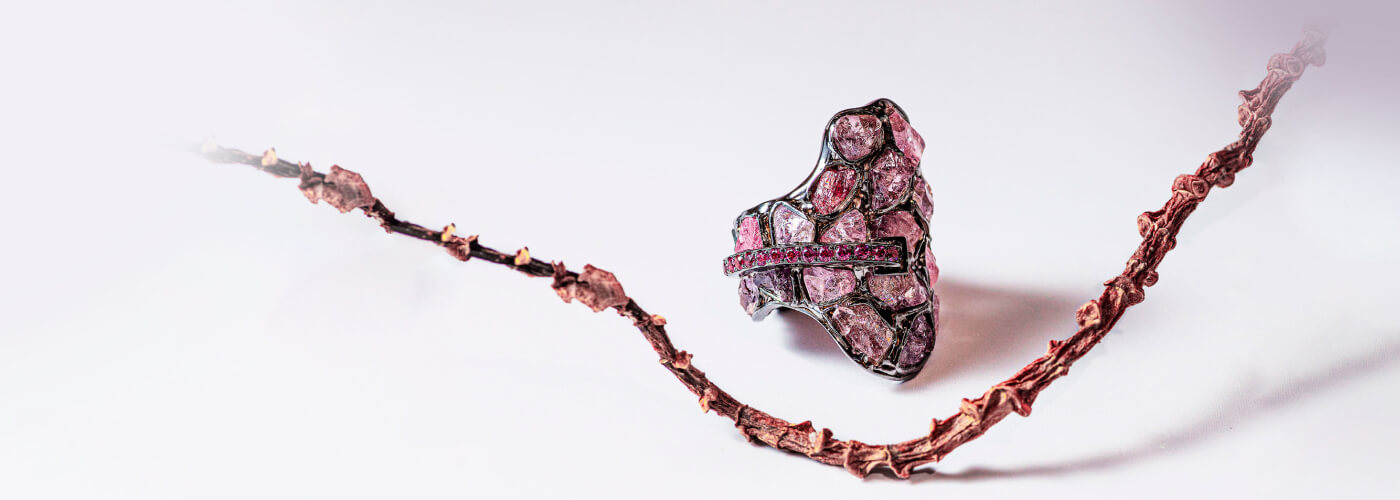
Diverse Origins and Gemology
Pink Garnet, specifically known as Rhodolite Garnet, is a naturally occurring blend of Almandine and Pyrope Garnet. This gemstone is renowned for its beautiful range of colors from pale rose to deep raspberry pink. Rhodolite Garnet is primarily sourced from countries like Brazil, India, Sri Lanka, and parts of Africa, including Tanzania and Kenya. The unique geological conditions in these regions contribute to the formation of Rhodolite's distinct color and clarity, making it a sought-after gemstone in the world of fine jewelry.
A Spectrum of Pink in Rhodolite Garnet Crystals
One of the fascinating aspects of Rhodolite Garnet is its broad color spectrum. Unlike other garnets that might lean towards red or orange hues, Rhodolite Garnet boasts a captivating pink to purplish-pink shade, attributed to the presence of manganese and iron in its structure. This wide range of pink tones allows for great versatility in jewelry design, offering something for every taste and occasion.
All About Rhodolite: Historical Beliefs and Symbolism
Historically, garnets have been associated with a wide array of cultural beliefs and uses. Pink Garnet, or Rhodolite, was no exception, often regarded as a talisman for protection, a symbol of love, and a guide for safe travel. Its soothing pink hues were believed to inspire emotional healing, foster self-worth, and promote spiritual growth, making it a gemstone rich in both beauty and meaning.
Contemporary Uses of Rhodolite Garnet
In modern times, Rhodolite Garnet continues to be cherished for its aesthetic and metaphysical properties. It's a popular choice for all types of jewelry, from rings and earrings to pendants and bracelets, appreciated for its durability (ranging from 6.5 to 7.5 on the Mohs scale) and its ability to complement both casual and formal attire. Beyond its use in jewelry, Rhodolite Garnet is also sought after by collectors and gem enthusiasts for its natural beauty and rarity.
Rhodolite: A Gemstone for Artistic Expression
Designers like German Kabirski are drawn to Pink Garnet for its unique color, natural beauty, and the creative possibilities it offers. Kabirski, in particular, values the gemstone's imperfections and natural character, incorporating raw, uncut Rhodolite into his designs to highlight its intrinsic beauty. Through such artistic endeavors, Pink Garnet serves not just as an adornment but as a medium for self-expression and creativity, bridging the gap between the ancient world and contemporary design aesthetics.
German Kabirski's Experiments with Rhodolite Garnet: Faceted Charm and Raw Energy
German Kabirski's fascination with Rhodolite Garnet stems from its unique blend of natural beauty and versatility in both faceted and raw forms. This gemstone, celebrated for its vibrant pink to purplish-red hues, serves as an ideal medium for Kabirski's innovative jewelry designs. One of Rhodolite's most compelling properties is its resilience to heat, which allows Kabirski to employ a distinctive technique where the jewelry is cast directly with the gemstone in place, rather than setting it afterward. This method opens up a realm of creative possibilities, enabling the designer to experiment with forms and textures that would be unattainable with more heat-sensitive stones.
The bright and versatile appearance of Rhodolite Garnet makes it exceptionally suitable for combinations with other gemstones. Kabirski skillfully plays on contrasts, pairing Rhodolite's deep pink shades with the varied colors of other gemstones to create pieces that are visually striking and harmonious. This ability to blend with a spectrum of colors enhances the gemstone's appeal, making it a staple in designs meant to stand out and captivate the viewer's attention.
While the transcendental qualities of gemstones might be a matter of personal belief, there is no denying the extraordinary effect Rhodolite Garnet has when incorporated into German Kabirski's creations. Beyond its physical beauty and design versatility, Rhodolite Garnet carries an essence that seems to guard against the mundane, imbuing each piece with a sense of protection and uniqueness. Whether or not one subscribes to the belief in gemstones' metaphysical properties, Kabirski's use of Rhodolite Garnet undeniably adds a layer of depth and intrigue to his jewelry, offering wearers more than just aesthetic appeal but a token of distinction from the ordinary.
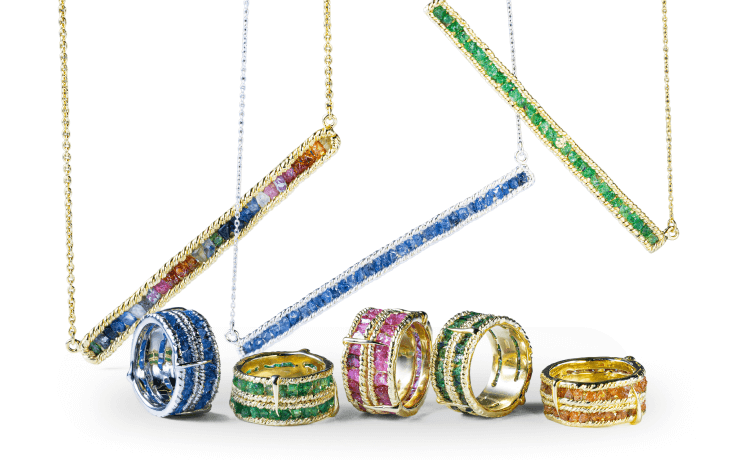

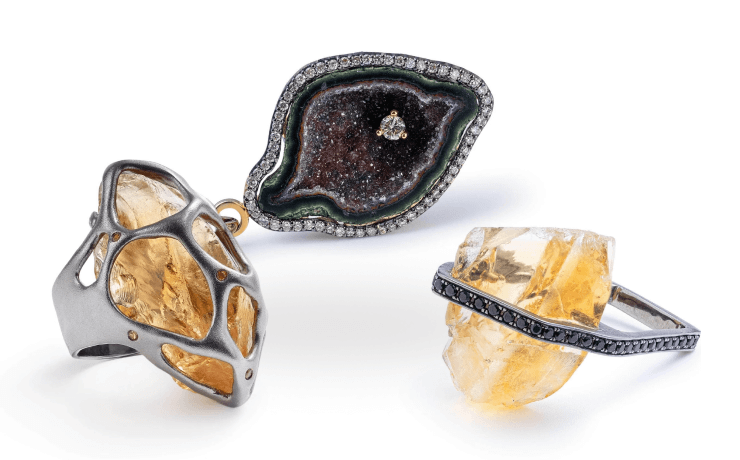

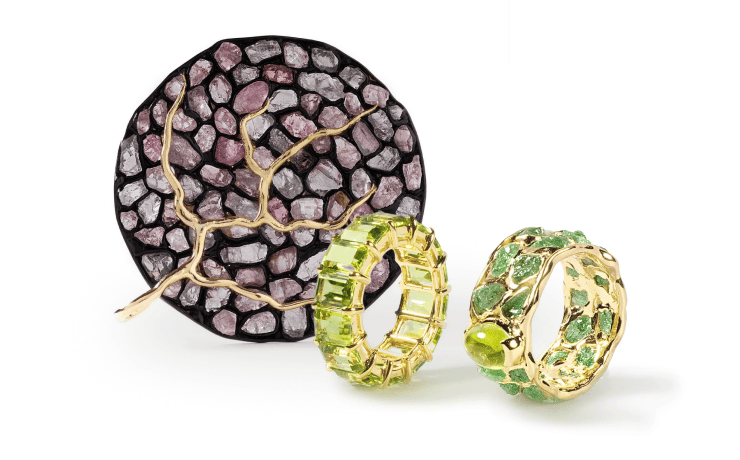

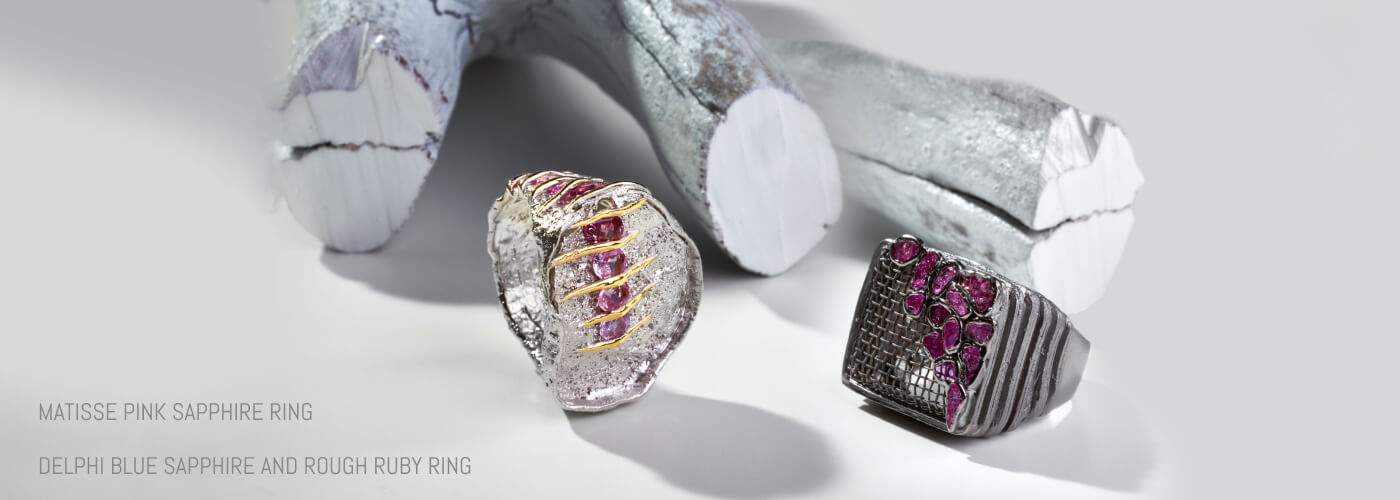
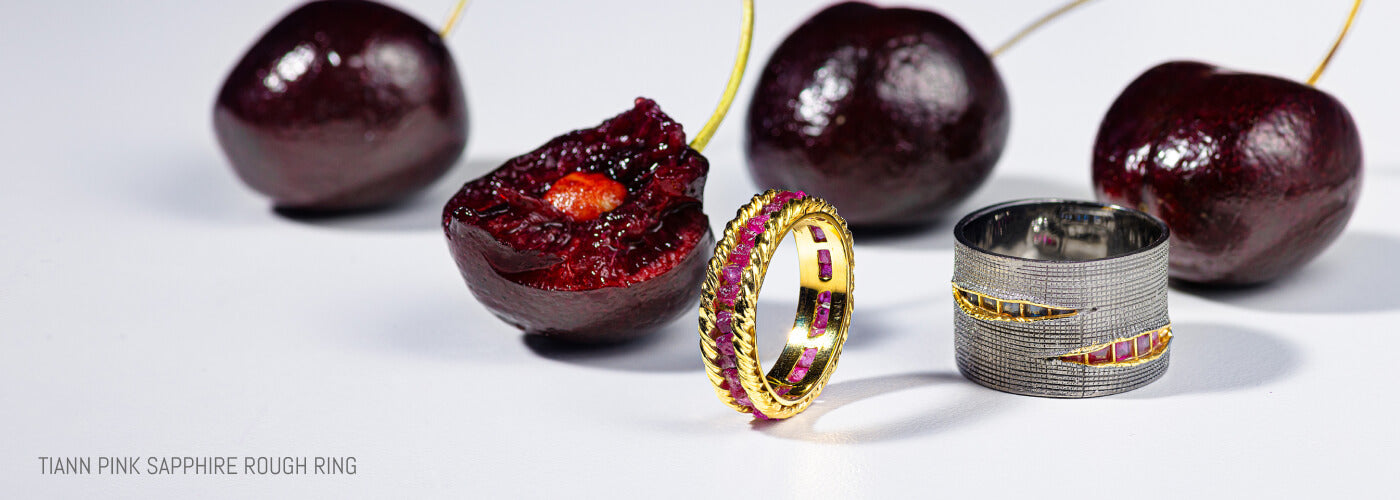
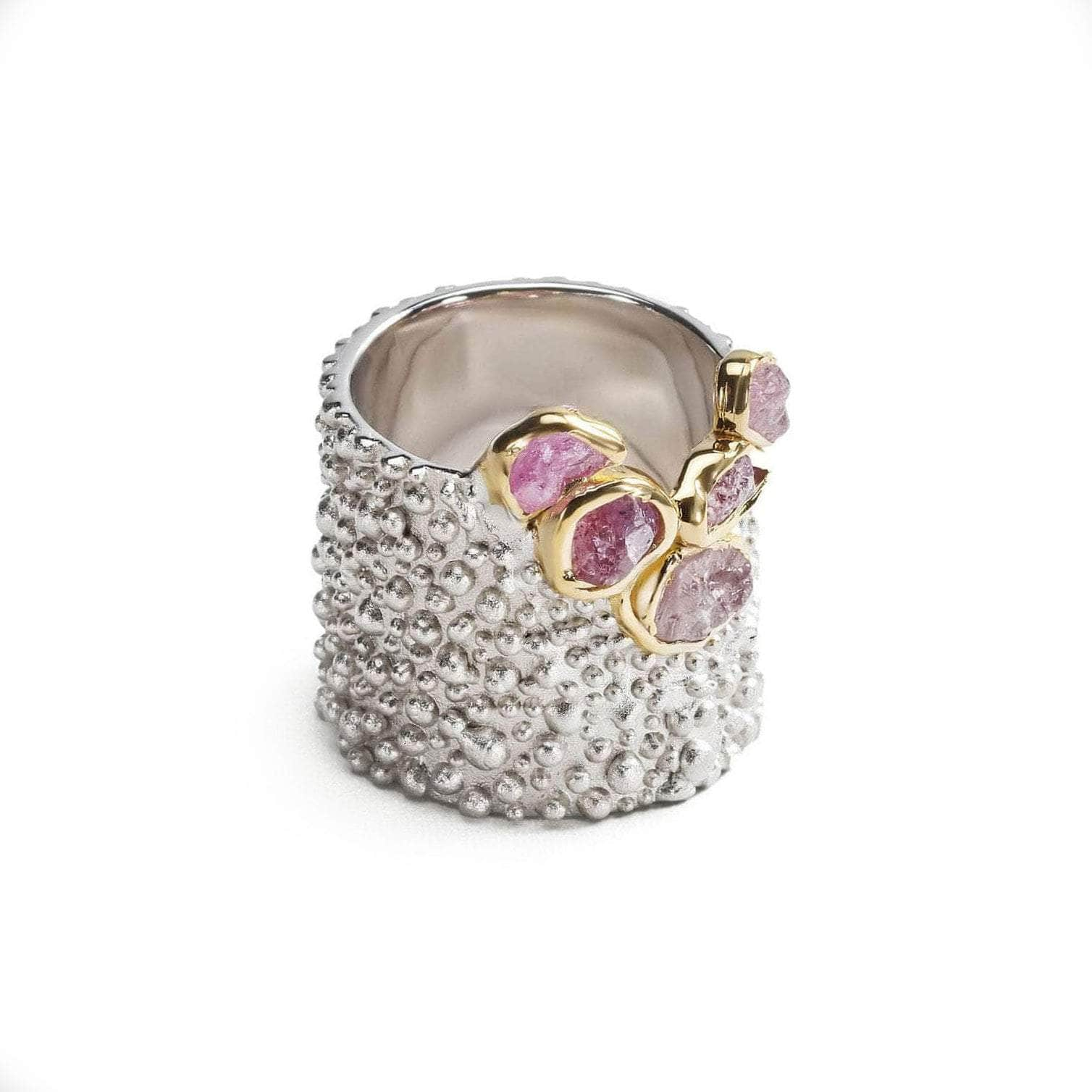
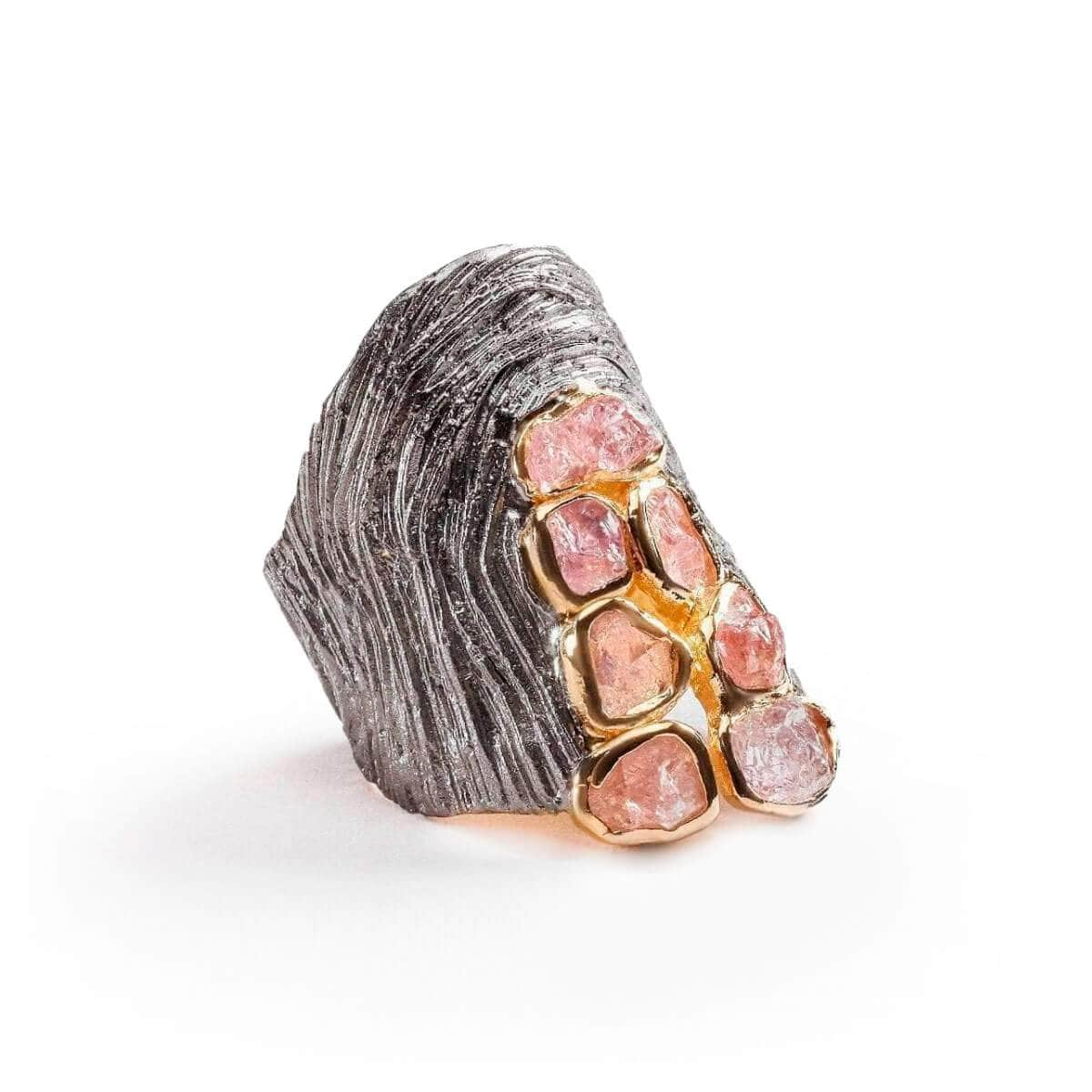
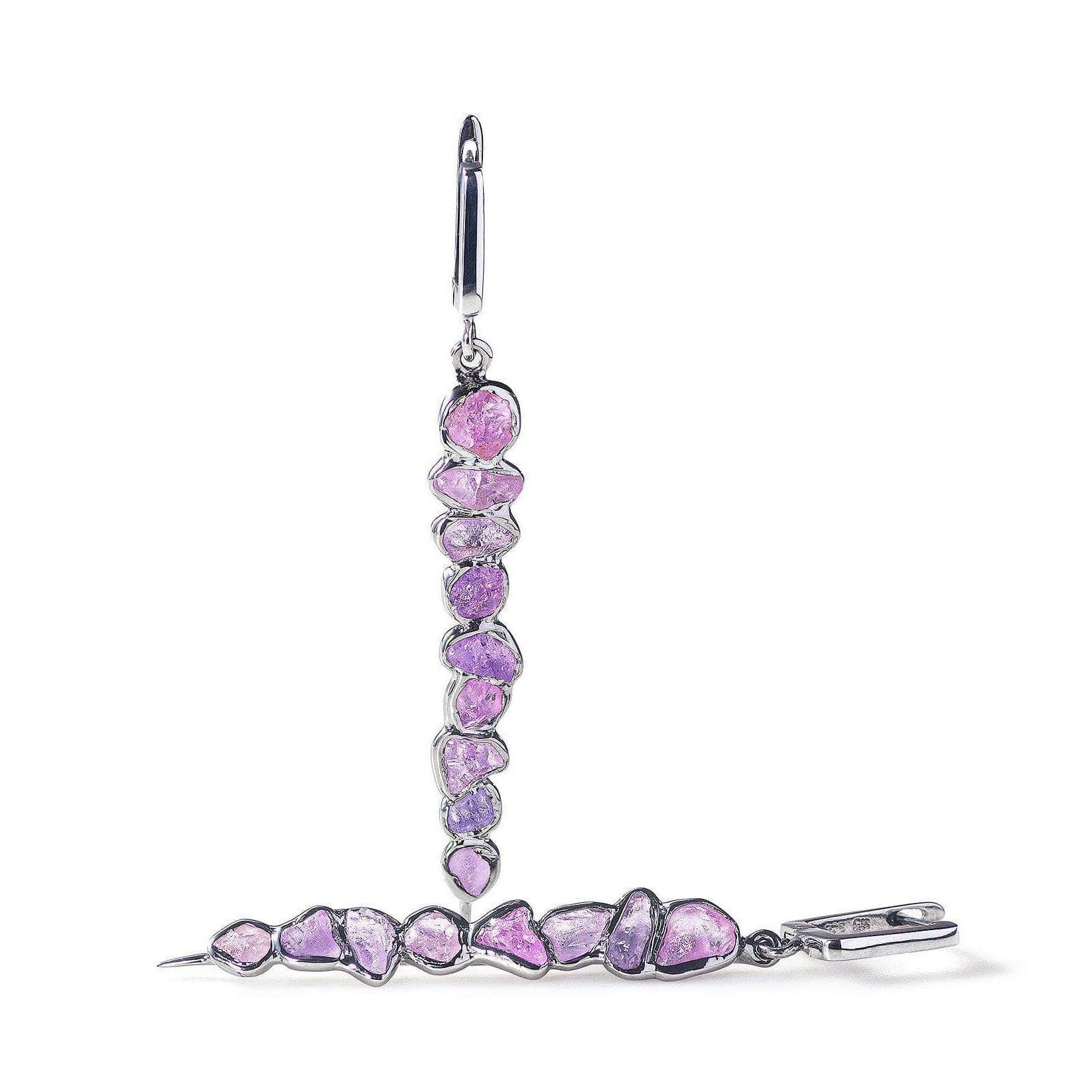
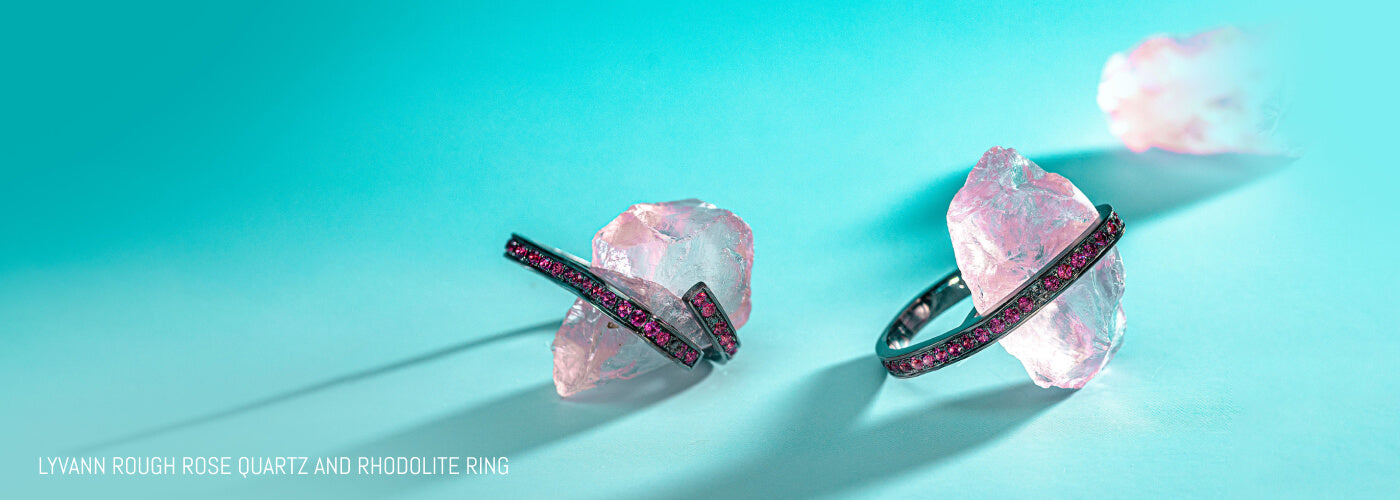
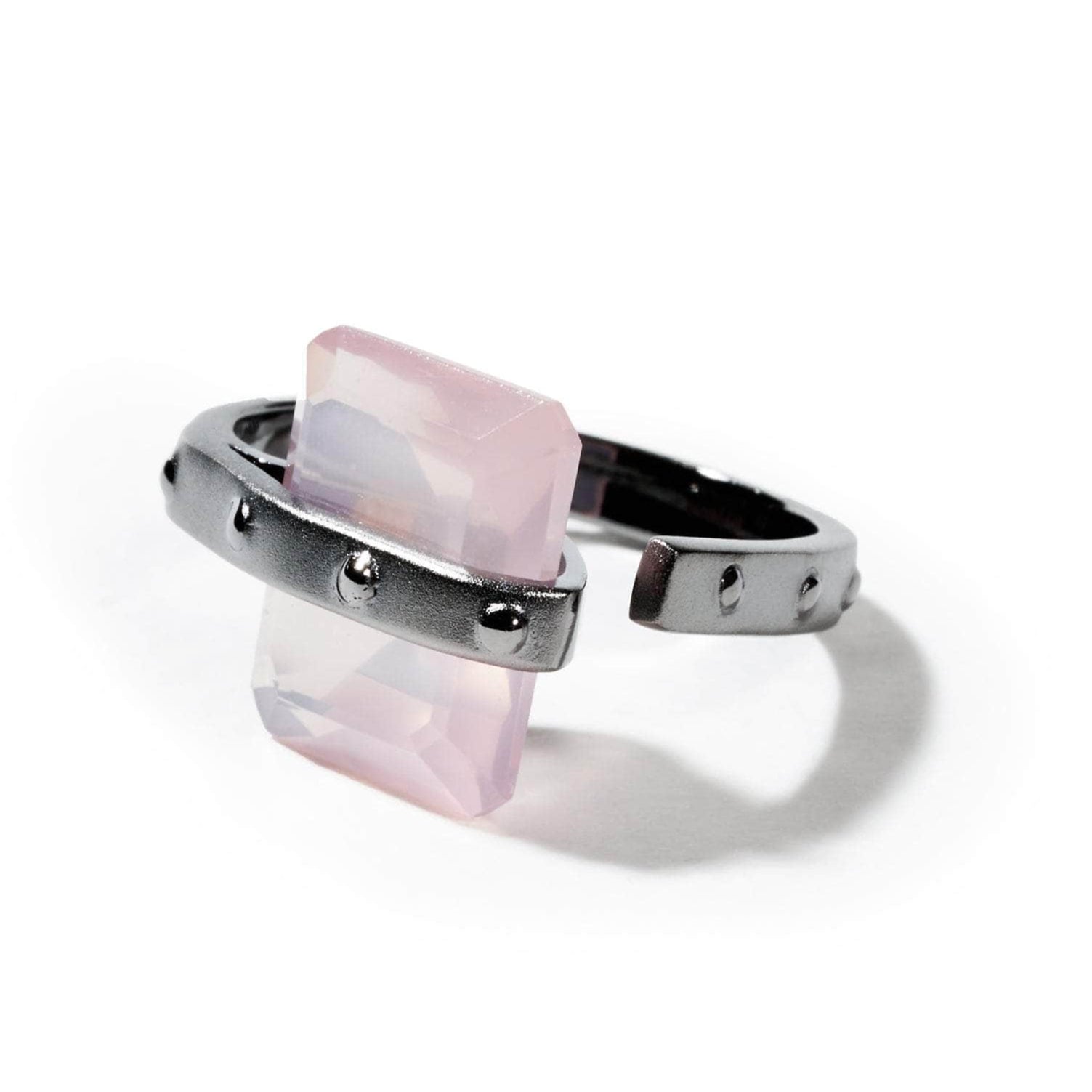
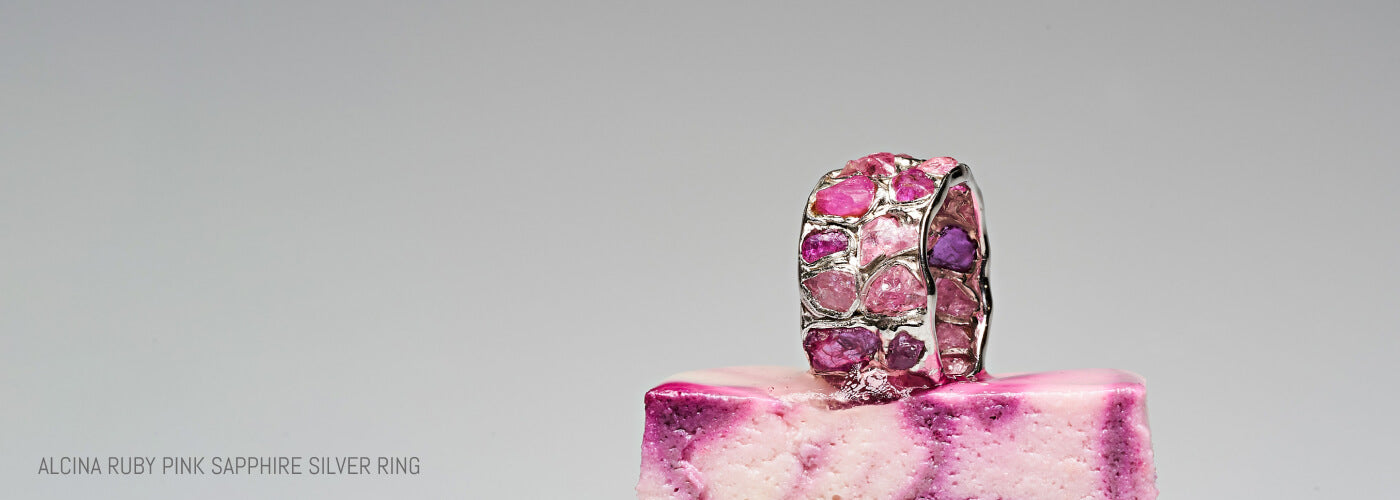
Share your comment
This site is protected by hCaptcha and the hCaptcha Privacy Policy and Terms of Service apply.